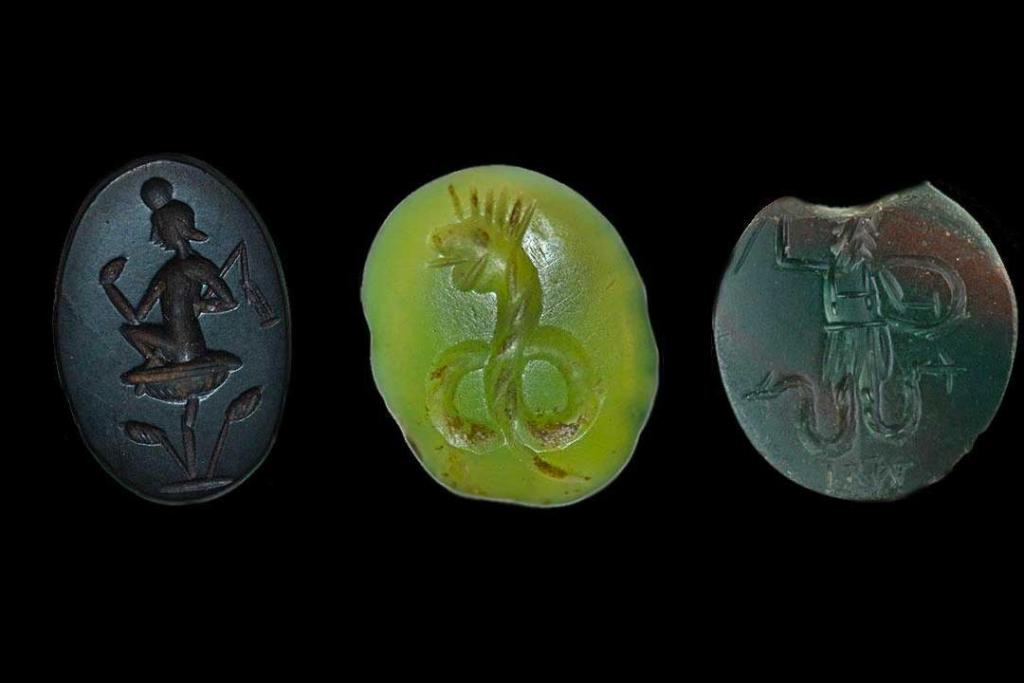It's a Roman kind of magic
Magical gem stones were used by ancient Romans for everything from protecting a child during birth or charming a lover, to curing an ingrown toenail or a bout of indigestion. Dr Chrissy Partheni tells us more about some of these magical items from our collection.

Roman religion, especially during early Imperial times, was to a great extent formal and public, with organised rituals and hierarchies of divinity and priesthood. But there were also popular cults and informal religious practices and beliefs, like the ones represented in our collection of magical gem stones.
The term 'magical gem stone' is a concept of modern archaeology to describe stones with specific characteristics. They were used to treat ordinary health conditions, such as ingrown nails or indigestion. The stones with a uterus inscribed on them served as protection during childbirth, while others were love charms. All types of stones were used for these magical gems, including haematite, jasper, cornelian or steatite, obsidian and even amethyst and lapis lazuli.
Their decoration is intriguing. In Roman times they were often decorated on one side with figures and divinities, in some cases adopted from Egypt.

In the example above Horus or Harcopcrates sits on a lotus. It is testified that the image of Harpocrates was used for love charms, as was the image of Aphrodite the Anadyomeni (rising from the water). In other cases, the makers of the magical gem stones created new gods: Chnoubis, a minor god of Egyptian astrology became an important solar deity and was extensively used for magical gems, such as the stone below. He is a snake with a lion head and rays on it.

Anguipe is a cock headed or snake legged human figure as shown below. He holds a shield and whip and is often inscribed with the name I A O. This god was an invention of the magical stones makers and one of the most common figure included in magical stones.

The inscriptions on the magical gems and other magical symbols are fascinating. The names of gods from the Jewish tradition ( Iao, Saboath, Adonai or of angels and protagonists from the Bible) are common, with Ancient Greek or Egyptian names being less so. Longer text on the stones is often difficult to decipher, but researchers identify it as the formula used by the magician to evoke the divine power required for the specific treatment.
In rare cases the text testifies for the use of the gem, possibly a wish or a prayer, such as the stone below. The Greek text reads: ΕΥΤΥΧΙ ΕΡΜΟΓONIA. This wishes for a happy life and prosperity.

There are known to be 4000 magical gems, preserved in different museums and private collections worldwide, often inaccessible to the public. The Campbell Bonner magical gems website is named after the American scholar who in 1995 published a significant amount on the magical gems. The website is an amazing resource of the themes and logoi (inscriptions) of the magical stones and we hope to include the ones from our collections in it.
